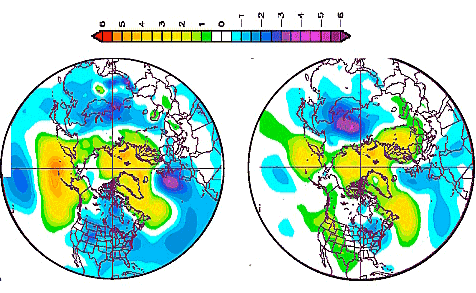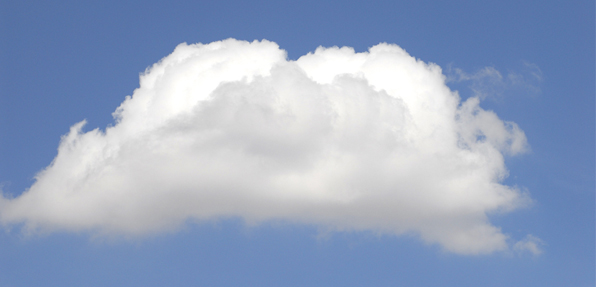But what if that ice cube was 20,000 square miles and the cup of water was 300 million cubic miles? What if the ice reflected incoming heat but the water absorbed it? And what if hurricanes, droughts, and forest fires depended on the outcome?
The polar ice caps have become synecdoche for the greater problems of climate change, but to meteorologists they’re still just a massive heat transfer problem. But at the ice cap’s scale, factors like reflection, incoming solar energy, mass transfer, and heat dispersion make for a very complicated relationship between the polar ice and our atmosphere. In a recent Geophysical Research Letters, Francis et al. outline how in the last 30 years weather patterns “remember” summer ice coverage. A one-time increase in summer heat energy ripples forward through the year in the form of increased cloud cover, warming of the lower troposphere and weakening of the jet stream. A freak hot summer at Santa’s workshop portends weather changes that you’ll feel in your own hometown for the next year.

Pictured above is a map from the report showing a pressure gradient map in the northern hemisphere in an average autumn (top) and an autumn following a summer with low ice cap coverage (bottom), in units of hectopascals. My hometown is in a nice, low-pressure blue region normally; a freak summer puts me in a green region that following autumn, raising pressure 200 Pascals from its normal rate. The immediate result of high-pressure systems is fair weather, but this region is drought prone and we depend on winter rain. The entire northern hemisphere is up for some surprising weather patterns if the ice cap dwindles too greatly in the summer.
But more importantly, this pattern also corresponds to the troposphere storing more heat energy. The change in pressure can mean a major change in wind direction, blowing air (and thus heat) into unexpected location. That’s a heck of a lot of change for one melted ice cube thousands of miles away. The difference between our ice cap and some frozen water in a calorimeter is that on such a vast scale, a lack of ice causes a compounding effect of heat-hoarding in the lower atmosphere.
- Without the ice’s reflective properties, the polar oceans suck in the sunlight, causing even more heat retention.
- After the summer, the ice cap begins its yearly rebuild. But the effects of the heat continue on in the form of additional cloud cover, which absorbs long-wave emission absorption from space to the tune of 10-4- watts per square meter. That’s more energy kept at ground level, which translates to—yes, more heat.
- The low ice affects low pressure. This, in turn, makes for a larger, deeper, more unstable boundary layer, which means even more storage of surface heat.
So a freak hot summer can mean a freak hot winter, and those just aren't as welcome as they used to be before we got savvy to the climate change thing.
Yet these winter clouds may have a silver lining. The North-Atlantic Oscillation, or NAO, is a large pressure fluctuation from the high-pressure subtropical Azores to low-pressure Iceland. This massive meteorological construct is what drives winter storms from west to east. Anomalies in this system are measured by the NAO index.
In the late 1980’s and early 1990’s, the NAO index was consistently positive, which means higher temperature, less snow, and more precipitation in the US. It was also linked to a major thinning of the arctic ice that has not yet been reversed. Summers with a low ice coverage area affect a negative NAO value. So, even though these hot summers are kicking up heat and greenhouse effect, at least they are not causing a catastrophic ice thinning. If we can find a way to keep the resulting greenhouse effects at bay, enduring a few inevitable summers of low ice coverage may give the ice cap thickness a shot at a rebound.

Francis, J. A., W. Chan, D. J. Leathers, J. R. Miller, and D. E. Veron (2009), Winter Northern Hemisphere weather patterns remember summer Arctic sea-ice extent, Geophys. Res. Lett., 36,




Comments